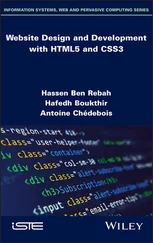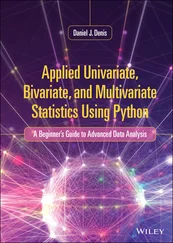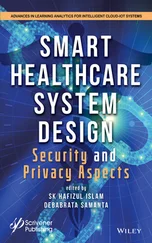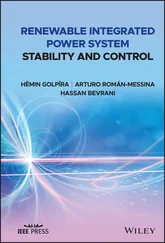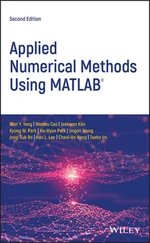Liuping Wang - PID Control System Design and Automatic Tuning using MATLAB/Simulink
Здесь есть возможность читать онлайн «Liuping Wang - PID Control System Design and Automatic Tuning using MATLAB/Simulink» — ознакомительный отрывок электронной книги совершенно бесплатно, а после прочтения отрывка купить полную версию. В некоторых случаях можно слушать аудио, скачать через торрент в формате fb2 и присутствует краткое содержание. Жанр: unrecognised, на английском языке. Описание произведения, (предисловие) а так же отзывы посетителей доступны на портале библиотеки ЛибКат.
- Название:PID Control System Design and Automatic Tuning using MATLAB/Simulink
- Автор:
- Жанр:
- Год:неизвестен
- ISBN:нет данных
- Рейтинг книги:3 / 5. Голосов: 1
-
Избранное:Добавить в избранное
- Отзывы:
-
Ваша оценка:
PID Control System Design and Automatic Tuning using MATLAB/Simulink: краткое содержание, описание и аннотация
Предлагаем к чтению аннотацию, описание, краткое содержание или предисловие (зависит от того, что написал сам автор книги «PID Control System Design and Automatic Tuning using MATLAB/Simulink»). Если вы не нашли необходимую информацию о книге — напишите в комментариях, мы постараемся отыскать её.
PID Control System Design and Automatic Tuning using MATLAB Provides unique coverage of PID Control of unmanned aerial vehicles (UAVs), including mathematical models of multi-rotor UAVs, control strategies of UAVs, and automatic tuning of PID controllers for UAVs
Provides detailed descriptions of automatic tuning of PID control systems, including relay feedback control systems, frequency response estimation, Monte-Carlo simulation studies, PID controller design using frequency domain information, and MATLAB/Simulink simulation and implementation programs for automatic tuning Includes 15 MATLAB/Simulink tutorials, in a step-by-step manner, to illustrate the design, simulation, implementation and automatic tuning of PID control systems Assists lecturers, teaching assistants, students, and other readers to learn PID control with constraints and apply the control theory to various areas. Accompanying website includes lecture slides and MATLAB/ Simulink programs
is intended for undergraduate electrical, chemical, mechanical, and aerospace engineering students, and will greatly benefit postgraduate students, researchers, and industrial personnel who work with control systems and their applications.
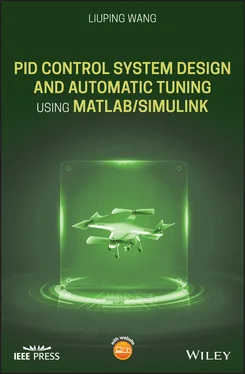
 ,
,  and
and  , where the controller transfer function
, where the controller transfer function  is expressed as
is expressed as

 and
and  are for the weighting on the reference signal, and as before, the coefficient
are for the weighting on the reference signal, and as before, the coefficient  determines the appropriate derivative filtering action. There are several special combinations of the parameters
determines the appropriate derivative filtering action. There are several special combinations of the parameters  ,
,  , and
, and  that are commonly encountered.
that are commonly encountered. and
and  only affect the closed-loop response to the reference signal
only affect the closed-loop response to the reference signal  and they play no role in the closed-loop stability. We have examined the cases where
and they play no role in the closed-loop stability. We have examined the cases where  and
and  are either 0 or 1. However, we can extend the results to the situations where the parameters are between 0 and 1 and expect a compromised result. Upon understanding their roles, we can choose the appropriate coefficients according to the actual applications.
are either 0 or 1. However, we can extend the results to the situations where the parameters are between 0 and 1 and expect a compromised result. Upon understanding their roles, we can choose the appropriate coefficients according to the actual applications. must be the same as the steady-state gain of the plant for the reason of introducing negative feedback in the control system. With the proportional closed-loop control, the feedback gain
must be the same as the steady-state gain of the plant for the reason of introducing negative feedback in the control system. With the proportional closed-loop control, the feedback gain  is set to be a very small value in magnitude to begin the experiment. The value of
is set to be a very small value in magnitude to begin the experiment. The value of  is gradually increased until the control signal
is gradually increased until the control signal  exhibits sustained oscillation (see Figure 1.12). There are two parameters obtained from this test: the value of
exhibits sustained oscillation (see Figure 1.12). There are two parameters obtained from this test: the value of  that has caused the oscillation and the period of the oscillation. We denote this particular
that has caused the oscillation and the period of the oscillation. We denote this particular  as
as  and the period as
and the period as  . With these two parameters, the PID controller parameters are presented for the Ziegler–Nichols tuning rules in Table 1.1.
. With these two parameters, the PID controller parameters are presented for the Ziegler–Nichols tuning rules in Table 1.1.
